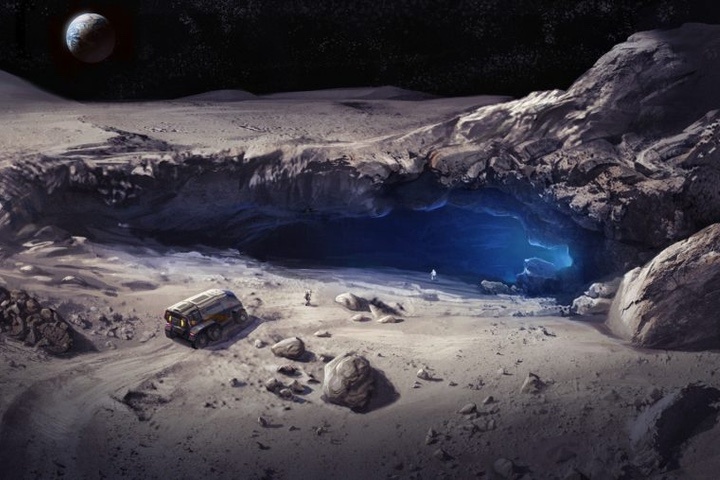So far, NASA’s Artemis Project, as budgeted through 2025, will be costing us about $100 billion dollars. “Billion” with a “B”.
And that’s before anyone will even sets foot inside a spaceship… let alone, on the Moon.
When I think about what I could do with $100 billion… I wanna cry.
I assume some Daily Post readers have been following this colossal expenditure of taxpayer money, with the aim of allowing a few people to live on the Moon.
Will they live in caves?
Or in an RV?
NASA is still figuring out the details. But a lot of the testing of equipment has been completed. One test involved the elevator that will be needed to carry the astronauts between the lunar surface and the top of the giant flying tower known as the Human Landing System. The HLS.
Here is the HLS as designed by SpaceX:
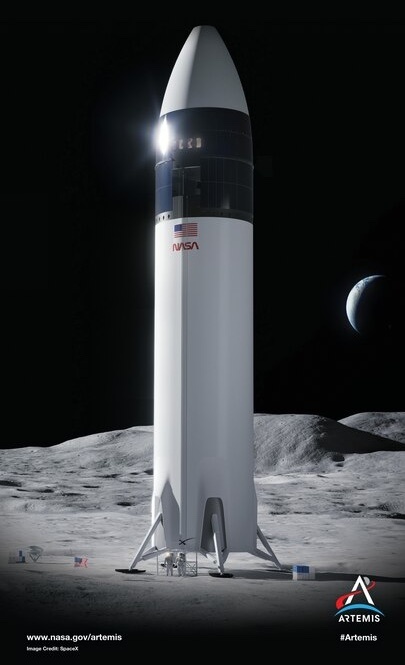
When you notice the two tiny people in the picture, the need for an elevator is obvious.
Elon Musk and his team started designing the Starship in 2010, for trips to Mars. But somewhere along the way, they got sidetracked into helping NASA land people on the Moon. Back in 1972, when the last astronauts strolled the lunar surface, they arrived in the ‘Lunar Module’… what might now be considered a compact car, relatively easy on gas mileage. The HLS, on the other hand, is a gas guzzler, and getting it to the moon will require NASA to build an orbiting gas station, called a “propellant depot”. A bunch of smaller rockets will be needed to fill up the ‘gas station’ — maybe 16 trips? Then, if all goes according to plan, the HLS can make a stop at this orbiting gas station and top off its tank, for the trip to the Moon.
But there will be no humans on the HLS. It’s just an empty, oversized shuttle bus.
The people will come later. First, the HLS needs to establish itself on lunar orbit. Then a totally different rocket will send some astronauts to the Moon in the Orion spacecraft, where they will hook up with the HLS and land on the surface.
And ride the elevator!
In 1969, we sent Apollo 11 to the Moon simply because we just wanted to see someone walk on the lunar surfaces and bring home some rocks. (There’s nothing else to bring home from the Moon.).
Later on, we wanted to see someone drive a car on the moon.
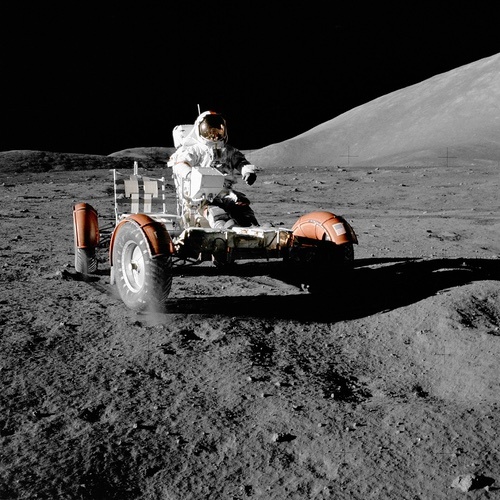
But we couldn’t figure out how to get the lunar rovers, or the lunar landers, back to Earth, so the astronauts left them there, thus turning the Moon into a junk yard. Humans are good at many things; creating junk yards is one of them.
The Artemis Project takes things to a totally new level, and we now want people to actually live on the Moon. That’s why we need a nice big delivery truck — the HLS — making trips back and forth, delivering food and such.
Where will these Moon settlers live? That’s a good question.
Presumably, an oversized delivery vehicle like the HLS would be able to deliver an RV to the Moon. NASA doesn’t like to call it an “RV”, however. They call it a “Pressurized Rover”. The Pressurized Rover is a large (pressurized!) vehicle used to enable a crew to travel across large distances and live in for multiple days. NASA has developed several versions of pressurized rovers, including what was formerly called the “Space Exploration Vehicle”.
We don’t know what NASA means by “multiple days”. So this vehicle might be useful for just a weekend trip, but possibly also for a real summer vacation.
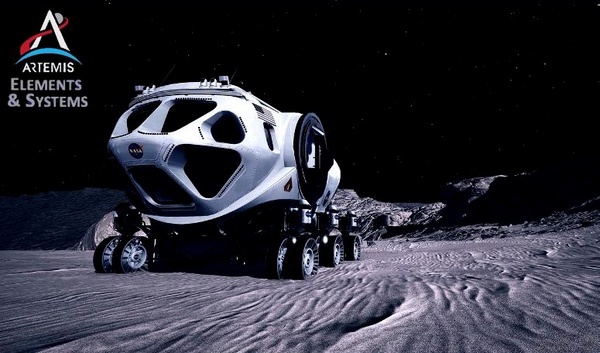
But the latest development in this science fiction story are the Caves.
55 years after the launch of Apollo 11, some scientists were looking through some old snapshots taken by NASA’s Lunar Reconnaissance Orbiter spacecraft in 2010, and they spotted some huge pits that appear to be ‘skylights’ to large caves stretching beneath the lunar surface.
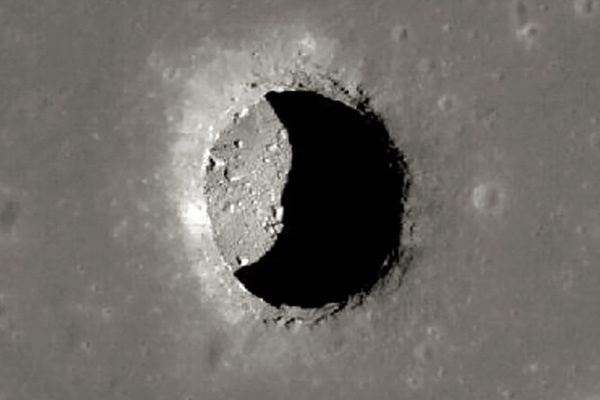
(Which reminds me. I have a lot of old snapshots in my closet that I probably ought to look through, some day. You never know what you will notice in old snapshots.)
If there are really underground caves on the Moon, they would be incredibly valuable to future astronauts, as a convenient, minimal-investment shelter for a lunar base. If your RV had mechanical problems, for example.
Just such an underground cave might be accessible through a pit in the well-studied Mare Tranquillitatis (Sea of Tranquility). Neil Armstrong and Buzz Aldrin touched down in this general area on July 20, 1969, but didn’t discover any caves. They didn’t have a car. They could only hop around near the lunar lander.
What I think would be really cool, but also weird, would be if the astronauts found cave paintings inside the cave.
Underrated writer Louis Cannon grew up in the vast American West, although his ex-wife, given the slightest opportunity, will deny that he ever grew up at all. You can read more stories on his Substack account.

